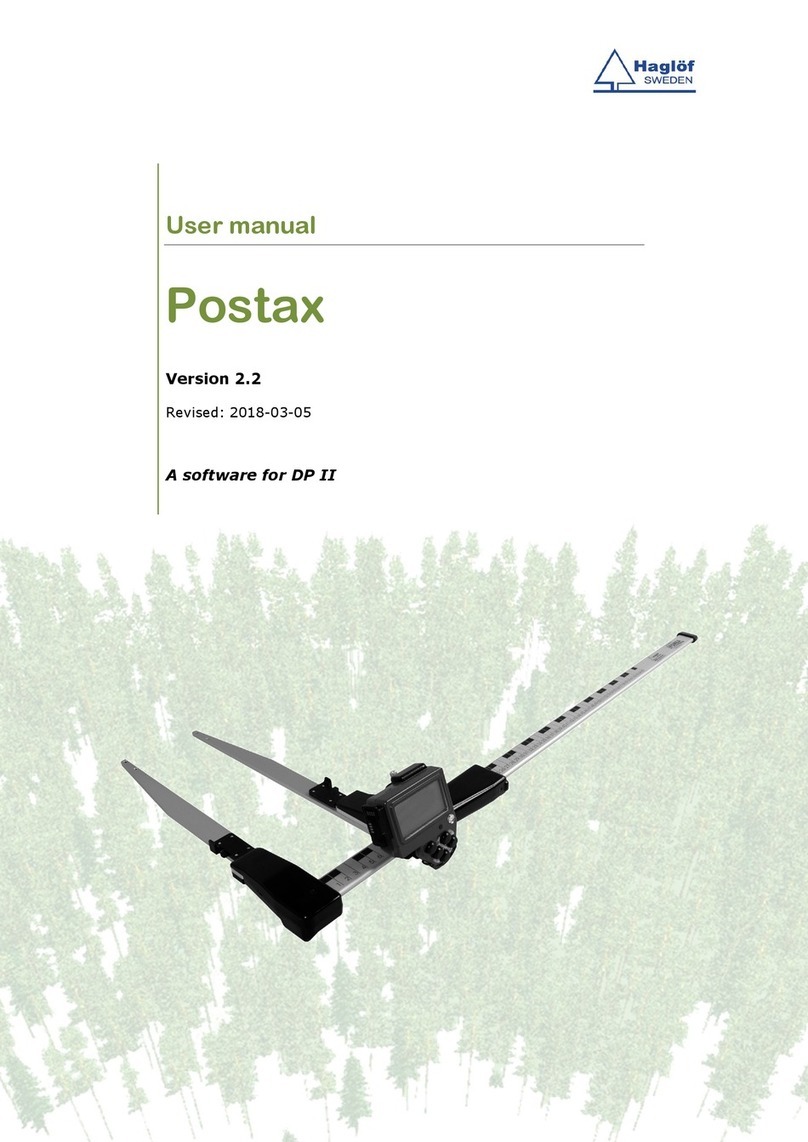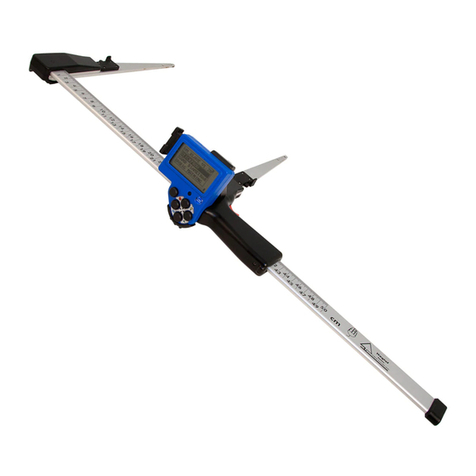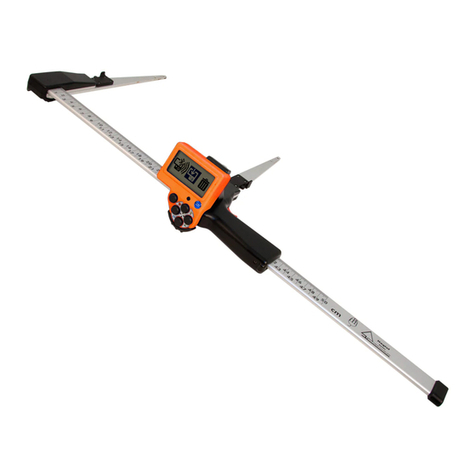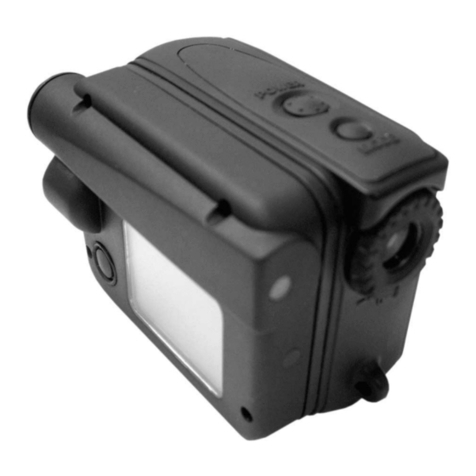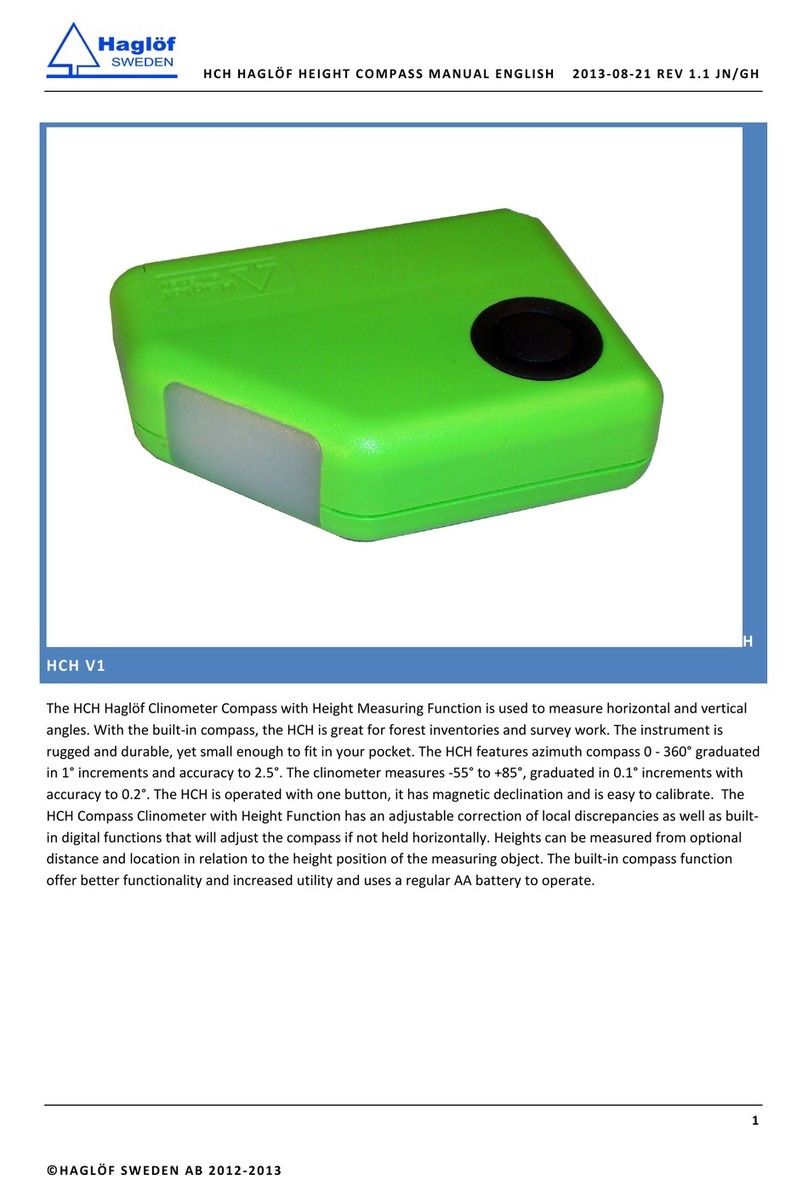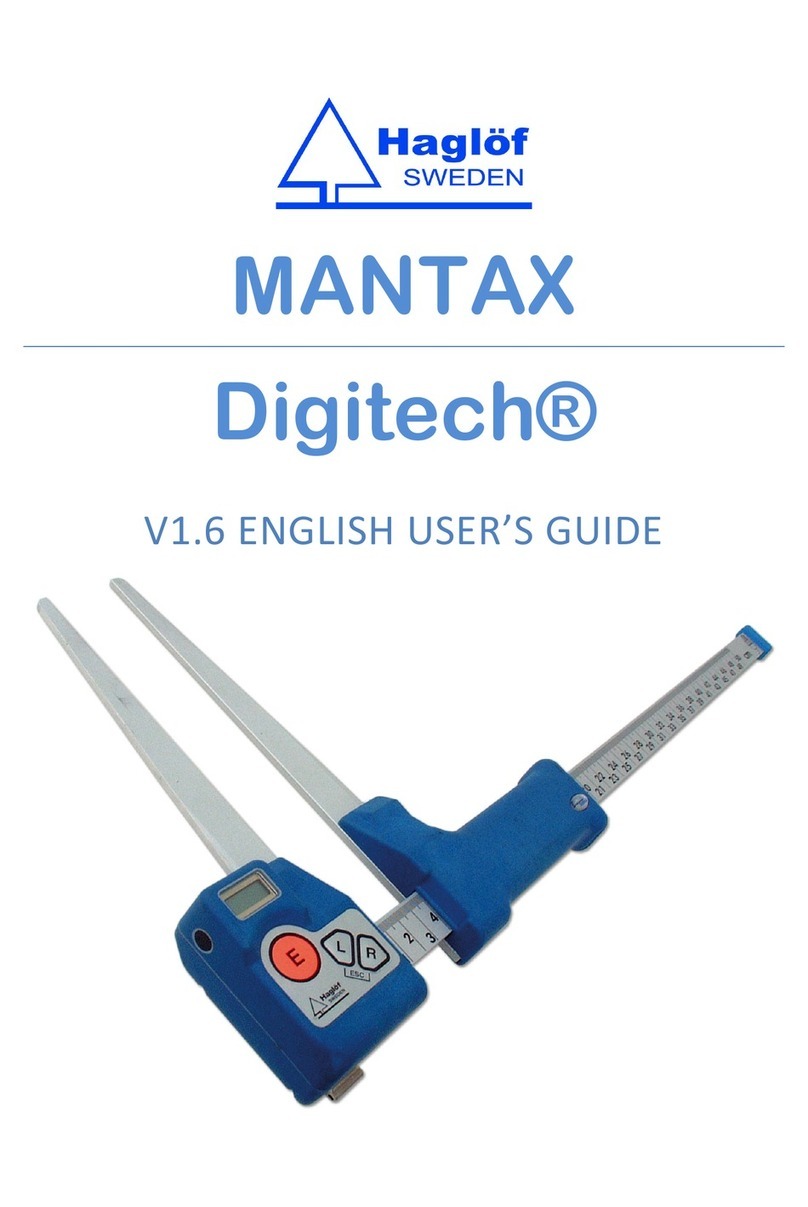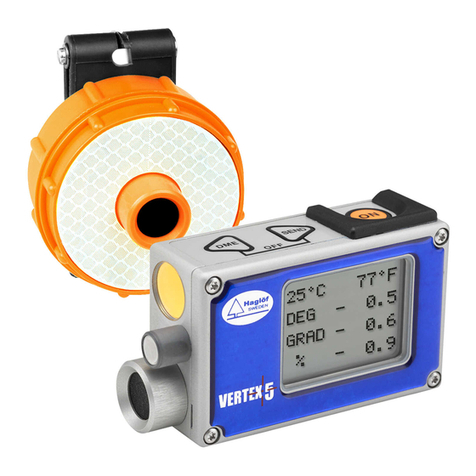Vertex Laser Geo and Laser Geo User Guide ENGLISH 2021-02-02
©Haglöf Sweden 2
CONTENTS
OVERVIEW........................................................................ 4
HAGLÖF SWEDEN®................................................................ 4
VERTEX LASER GEO AND LASER GEO.................................. 4
Features ....................................................................... 4
INSTRUMENT OVERVIEW......................................................... 6
TRANSPONDER T3................................................................. 7
360 ADAPTER/SPREADER.................................................... 7
MONOPOD PLOT CENTER STAFF .............................................. 7
MONOPOD....................................................................... 7
FUNCTIONS AND USE OF THE BUTTONS ........................... 8
BUTTONS.......................................................................... 8
ON ................................................................................ 8
ARROW BUTTONS ........................................................ 8
DME button.................................................................. 8
SEND button................................................................. 8
EXIT (DME + SEND)....................................................... 8
Reset ............................................................................ 8
Turn off......................................................................... 8
SIGHT................................................................................ 9
Red Dot Sight ............................................................... 9
Heads-up Display ......................................................... 9
BATTERY AND CHARGING OF BATTERY .................................... 9
MAIN SCREEN................................................................... 9
Status Icons .................................................................. 9
MENU SCHEME .............................................................. 10
SETTINGS.........................................................................11
METRIC/FEET:................................................................. 11
DEG/GRAD/%: ................................................................ 11
P.OFFSET: ....................................................................... 11
TRP.HGT: ........................................................................ 11
EYE HGT:......................................................................... 12
M.DIST:........................................................................... 12
LASER MODE: ................................................................. 12
BAF:................................................................................ 12
COMPASS ....................................................................... 13
MAGNETIC DECLINATION:.............................................. 13
AZIMUTH........................................................................ 14
DISTANCE MEASURING....................................................15
DISTANCE MEASURING METHODS.......................................... 15
Laser........................................................................... 15
Ultrasound ................................................................. 15
HEIGHTS ..........................................................................16
HEIGHT 3P –3-POINT MEASURING WITH LASER ............ 16
HEIGHT 1PL –1-POINT MEASURING WITH LASER........... 17
HEIGHT DME –2-POINT MEASURING WITH ULTRASOUND
....................................................................................... 18
HEIGHT DME –2-POINT MEASURING WITH MANUAL
DISTANCE ....................................................................... 19
MAP TRAIL...................................................................... 20
DISTANCE WITH DME OR LASER ............................................ 21
MAP TRAIL STEP BY STEP ................................................ 21
Trail Length ................................................................ 23
Trail CSV Data............................................................. 23
Example Google Earth file, KML file ........................... 23
MAP TARGET .................................................................. 24
MAP TARGET STEP BY STEP ............................................ 24
DME BASELINE ........................................................ 26
TARGET SUMMARY .................................................... 26
TARGET CSV Data ....................................................... 26
Example Google Earth file, KML file ........................... 27
TO EVALUATE MAP TARGET DATA....................................... 27
MAP GPS ...................................................................... 28
TARGET CSV DATA ................................................. 28
EXAMPLE GOOGLE EARTH FILE, KML FILE ........ 29
COMPASS ....................................................................... 30
COMPASS FUNCTION IN THE GEO INSTRUMENT........................ 30
Using the Compass..................................................... 30
3D VECTOR ..................................................................... 31
ANGLE–MEASURING OF ANGLES/INCLINATION............. 33
ANGLE –HORIZONTAL DISTANCE WITH ULTRASOUND
WITH THE VERTEX LASER GEO................................................ 33
LINE CLEAR ..................................................................... 34
POWER LINE EXAMPLE......................................................... 34
STEP1.......................................................................... 34
STEP 2: 3-POINT MEASURING WITH LASER................ 34
STEP 2: 2-POINT MEASURING WITH ULTRASOUND IN
THE VERTEX LASER GEO ............................................. 35
MIN. DIST........................................................................ 36
STEP1 –First point on the powerline.......................... 36
STEP2 –Second point on the powerline ..................... 36
STEP3 –Third point on the object .............................. 37
Result.......................................................................... 37
DELTA HGT...................................................................... 38
DELTA HEIGHT FUNCTION .............................................. 38
DME –DISTANCE MEASURING WITH ULTRASOUND
VERTEX LASER GEO......................................................... 40
CALIBRATE –CALIBRATING THE ULTRASOUND .............. 40
BAF –BASAL AREA FUNCTION ........................................ 41
BAF with Laser............................................................ 41
GPS................................................................................. 42
GPS USE........................................................................... 42
